Buy to Let tax revamp
Tax changes in the Buy to Let market announced in the 2015 Budget will impact on a landlord’s tax bill and potentially hit profits.
- From April 2016 Stamp Duty Land Tax for Buy to Let property purchase increased by 3%.
- From April 2017 landlords will only be able to claim relief back on their mortgage finance costs at the basic rate of 20%, although the withdrawal of the higher rate reliefs will be phased in over four years.
- The 10% ‘wear and tear’ tax relief was replaced in April 2016. Landlords can now only claim tax relief when they replace furnishings.
Tax relief to be slashed over four years
While the extra 3% stamp duty on Buy to Let properties wouldn’t have gone down well with landlords, perhaps the biggest change affecting people with property portfolios relates to the relief restriction on loan interest.
At the moment, landlords can deduct mortgage interest from their profits, which can significantly reduce their tax bill. From April 2017, however, this tax relief will reduce, until April 2021 when it will be restricted to the basic rate of income tax (currently 20%). This means those on higher incomes will find themselves losing much more in mortgage interest payments.
According to the estimates from Nationwide Building Society, an investor with a £150,000 Buy to Let mortgage on a property worth £200,000 attracting a monthly rental income of £800, is likely to see his or her net annual profit drop from £2,160 a year to just £960.
The changes in income tax relief are being phased in from 2017 to 2021, which allows a period of time to adjust to the impact. That said, it will make a fundamental difference in the economics of property investment; rather than lock into a five year fixed rate today, landlords may be tempted by shorter-term fixed rate deals to get lower rates of interest.
A level playing field
While the major players in the Buy to Let market will see their profits shrink, it might mean less competition for landlords on a lower income, or those new to the market. If you’re considering a first time Buy to Let purchase
it’s important to plan carefully. Make sure you:
- know what you want from your investment and plan thoroughly research the market, the area and the property before you buy
- identify the type of tenant you’d want living in your property
- ask us about the right Buy to Let mortgage deal for your circumstances
Buy to Let mortgages are not regulated by the Financial Conduct Authority.
HM Revenue and Customs practice and the law relating to taxation are complex and subject to individual circumstances and changes which cannot be foreseen.
If you’re a Buy to Let landlord or you’d like help investing in your first Buy to Let property please get in touch.
Your home may be repossessed if you do not keep up repayments on your mortgage.

